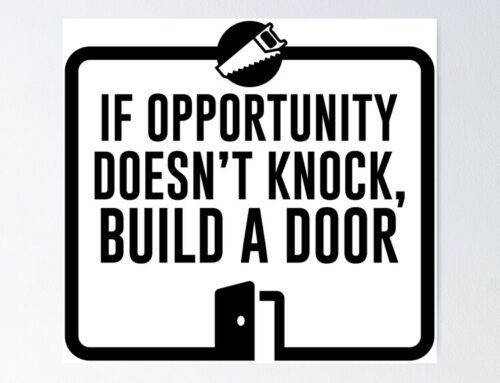
Inside Sales vs. Outside Sales: Which Is Best for You?
One of the biggest decisions you can make when setting up your sales team is whether to focus primarily on inside or outside sales.
They seem to be completely at odds, with one focused on clients with a high acquisition cost and high ACV (annual account value), the other focused on a high sales velocity.
The truth is, though, that they’re just two sides of the same sales coin — and you likely need both in your company if you’re going to succeed.
We’ll look at the strengths of each type of sales, why you need both of them in your team, and how to determine the best balance for your organization.
Then we’ll get into the nitty-gritty of what you need to look for when hiring salespeople to fill those gaps in your team.
- What is inside sales?
- What is outside sales
- Should you use inside or outside sales?
- How are they different, and how can that help you?
- How can inside and outside sales work together?
- Hiring guide
- Skills and qualifications necessary for inside sales
- Skills and qualifications necessary for outside sales
- Compensation
- Who is the best fit for the role?
What Is Inside Sales?
Inside sales is remote sales, meaning, it’s done entirely in the office, from the sales rep’s desk. Instead of selling face-to-face, inside sales utilizes all the communication tools that modern salespeople have at their disposal:
- Phone
- VOIP
- CRM platforms
- And much more
Inside sales may be used by any sales team, but it’s one of the top sales models in B2B, especially for SaaS and tech.
There’s a common misconception that’s finally starting to fade that inside sales is essentially just telemarketing. Nothing could be further from the truth.
The difference lies in the fact that telemarketing is scripted. It can be done by anyone, even a computer. Inside sales, however, requires a skilled salesperson. It may be done over the phone, Skype, email, web conference…. It doesn’t matter.
Inside sales is sales done by a skilled salesperson, remotely.
What Is Outside Sales?
Outside sales is the sales of products and services through in-person, face-to-face interactions. Also known as “field sales,” outside sales reps don’t work in-house. Instead, they meet with prospects outside the office.
Outside sales often involves a large amount of travel, autonomy, and emotional intelligence.
Because outside sales reps typically deal with larger and more expensive accounts and products than inside sales reps do, they’re often seen as their company’s superstars.
Armed with today’s sales enablement tools, Skype, and Zoom, a large portion of the job can be done from the office. But what sets outside sales apart is their flexibility and willingness to be in person whenever and wherever needed to make the sale.
Should You Use Inside Or Outside Sales?
Traditionally, companies have focused primarily on outside sales, but the industry is changing.
Inside sales is growing at a massive rate — 15x faster than outside sales.
Most organizations are now trending toward 50/50 for their teams. This is largely to do with the internet changing the way most people buy things. Fewer people than ever before want to be sold to in person.
SBMI ran a survey of one of their clients and found that only “27.9% of their Buyers preferred to buy face to face”
Face-to-face sales is still important. People feel more comfortable spending large amounts of money or making big purchases in person, but more and more virtual sales is simply more convenient for everyone.
The mix of inside vs outside sales that you will use in your organization will depend on your products, your organization, and your sales strategy.
The Product
The products you sell are one of the biggest things that will determine the ideal mixture of inside to outside sales that you’ll conduct.
A good way to think about this is to ask yourself, “Is our product something we’d be likely to buy on impulse, say, in response to a Facebook ad, or is it more like an expensive technology that would change the way our company operates?”
Things that sell well through a Facebook ad are:
- Small products
- Products with a small ACV
- Products that solve a simple, immediate, problem
- A one-time purchase
- Something that appeals to a mass-market
Using inside sales for these products is going to be more cost-effective. Because the price and commitment are lower, the convenience of the purchase is going to be one of the most important aspects to your customer. The sales velocity is much higher.
In contrast, most people prefer to buy larger, more expensive products in person.
You probably don’t want to buy an enterprise CRM online for example. You usually want to see how it works in person, have the product customized for your brand, and shake a person’s hand as you make the deal.
If you trust the salesperson, you’ll probably trust their recommendation to buy the product. If you don’t, you probably won’t.
This is where outside sales shines.
These are going to be:
- Large and expensive products
- Products with a large ACV
- Products that solve a more complicated problem, or have many potential benefits
- Products that will involve an ongoing commitment, payment, or could affect the future in a large way
With these kinds of products, your buyers will usually want to take more time to think through their purchase, and they’ll appreciate the personal touch. These customers typically have a much higher CAC, and by taking the time to be there in person, you’ll end up seeing more money come through your company as a result.
However, this is changing.
People are now becoming more comfortable making large purchases online. It wasn’t long ago that buying a car online was unthinkable. Now, it happens fairly regularly on eBay and other sites.
That’s why, no matter what your product, you want to be sure that you have people on your team who can do both inside and outside sales.

The Organization
The nature of your organization affects the ratio of inside to outside sales that your team uses. And in the same way that your products may be more suited to inside or outside sales, your organization may be more suited to one or the other.
Inside sales will be a good fit if your organization is:
- Primarily digital
- Focused on a high sales velocity
- Focused on reaching as many new prospects as possible
Outside sales will be a better fit if your organization:
- Sells physical products or complex technology
- Is focused on reaching a more elite market
- Is focused on creating long term, ongoing relationships with your customers
The Strategy
The sales strategy is extremely important in determining your sales method. If your strategy doesn’t match the strengths of your team, then you’re in trouble. Here’s how to know which strengths you’ll need from your sales team.
Inside sales is a good fit if your sales model is:
- More transactional
- Automated through digital funnels
Outside sales is a good fit if your sales model:
- Is largely relational
- Requires demos, meetings, and other high-touch interactions
How Are They Different, And How Can That Help You?
In today’s world, inside sales and outside sales have a lot of overlap, but they do still have differences.
Obviously, on the surface they can look very different — one being an office job and the other involving a lot of travel and in-person meetings. However, their actual sales processes are almost identical.
So what are the important differences and why do they matter?
Sales Cycle
One big difference between the two is the length and complexity of the sales cycle.
Inside sales typically has a much shorter sales cycle. It goes through all the same steps that outside sales does, but you work through the steps much more quickly.

Inside sales focuses on SMB, mid-market buyers. The products are typically much less expensive and don’t require as much thought and decision-making from the customers.
You can’t afford to spend big money and time to acquire these customers because the profit margin is already razor-thin.
As such, inside sales is a numbers game. The focus is on volume.
Outside sales, meanwhile, tackles big customers where ACV is higher. As such the customer needs more time to make this large decision.
You need a personalized touch and lots of face-time to build the trust and relationship necessary to move the prospect through the sales process.
This, plus the cost of travel, results in a very high CAC for outside sales relative to inside sales. As such the focus is on high-quality, high-value accounts.
An inside salesperson may go through the entire sales process in a few hours, maybe less. And if they’re doing a webinar or a group call, they could be selling to any number of potential clients all at once. On the other hand, outside sales can involve week- or month-long sales cycles.
Close Rate
Another big difference is in their close rates. Outside salespeople, on average, boast a much higher close rate than inside salespeople.
This isn’t because the outside sales reps are better at their jobs, but rather an effect of their different strategies. One is focused on quantity, an economy of scale, and tight profit margins. The other is focused on the exact opposite.
If you lose a sale in inside sales it’s not much of a deal. Inside sales has a very low Customer Acquisition Cost (CAC) compared to outside sales.
You may lose a day or two of time, at most, finding another potential customer. In fact, you’ll likely bring in more revenue by letting the difficult customer go because you can make several other sales in the time you would have spent working with the one difficult one.
Outside sales has a much higher CAC. If you lose a sale here, that could be weeks or months lost and thousands of dollars wasted.
With a high account value and a high CAC, it’s more economical to work with a difficult client for as long as it takes to win them over.
How Can Inside And Outside Sales Work Together?
The most obvious way that inside and outside sales work together to increase your bottom line is at the strategic level. As I mentioned above, drawing from both models, you can avoid missed opportunities.
- Inside sales focuses primarily on small to mid-sized businesses — the accounts that are more transactional.
- This frees up the outside sales reps to spend the time and money required to bring in big accounts with a much larger ACV.
This isn’t the only way the two branches can work together, though. They can also support each other tactically.
We reached out to Mark Kosoglow, who told us:
“Inside sales teams collaborate and share best practices with much less friction than outside folks. Hearing how someone overcomes an objection on a live call happens organically when you sit next to a peer.
Understanding how to position value to a particular persona you are about to jump on a call with can happen with a quick conversation while you wait for the person to join the meeting.
As a result, the ideas reps like can spread and can be rolled out as sales enablement to outside reps after they reach a critical mass of efficacy.”
It’s also important to remember that the way your customer wants to interact with your company isn’t static.
Your customer may prefer the in-person sales pitch the first time they buy from you, but then they may prefer the convenience of buying remotely once they trust your company.
The opposite may be true as well. Their preferred method of communicating with your sales team could even change throughout the same sales process.
Inside and outside sales need to be working together. Only then can they pass leads to the right place to ensure you’re interacting with the customer in the most effective way to make a sale.
Hiring guide
Hiring the right person can be difficult, but we’re going to try to make it easier.
What exactly are you looking for when you hire inside vs outside sales reps? We reached out to sales recruiting expert Amy Volas, and here’s what she had to say.
“It starts with an intentional mindset of knowing who you need to hire and why. More often than not, companies just don’t know who they need to hire. That results in a lot of wasted time and money.
From my vantage point, this comes from a lack of understanding of
- Where they really are in their business
- How the sales organization should be set up
- Where they are in their hiring process
In the same way you need to define this with your TAM and buyer profile, you need to apply the same rules to the hiring profile.
For example, if you’re an early-stage startup and a first-time founder, it’s unlikely you’ll have a dedicated person finding and qualifying leads with a well-defined go-to-market strategy. Let’s be honest, the odds are your salespeople will have to do this work themselves.
It might be tempting to bring in a heavy hitter from a blue-chip brand because of their experience, but that could be a bad decision. That person is used to having a tremendous support system to enable them, along with a significant brand to back it up (being fed leads, getting a seat at the table just because you’re XYZ brand, a well-defined sales process, etc.).
But when it comes to a startup, those same rules don’t apply. This person needs to build first… a big task that shouldn’t be taken lightly.
Simply put, not all salespeople or startups are created equal. Even top performers from the most impressive startups have different experiences and abilities, and sometimes the person with “less experience” could actually be the better fit for you.
This all boils down to knowing exactly which skills you really have to have and which ones you don’t — and most importantly, why.”
Like Amy mentioned, don’t focus too much on the label or the experience on the resume, focus on the skills that will fill the gaps on your team.
That may mean having specialists in both inside and outside sales, or talented salespeople who are adept at both aspects.
We’re going to look at the skills that you want to look for when filling either an inside or an outside sales role, the qualifications that are good for them to have, and the questions you should be asking in interviews to ensure that you’re hiring the best people for the job.
Skills and Qualifications Necessary for Inside Sales
One of the biggest difficulties with inside sales comes with describing the product. The salesperson often has to describe the product over email or phone without the help of visuals, although this is getting easier with video conferencing and other tools.
To counteract this, they need to be exceptional at research and communication. Inside sales requires someone skilled at breaking down complicated subjects into something that is easily understood, and they need to be able to paint a picture for the customer with words.
Like all salespeople, they need to be persuasive, but they need to be just as persuasive in writing as they are speaking.
Another important skill for inside sales is the ability to build solid relationships that lead to a sale. Inside sales doesn’t require the same level of relationship as outside usually does, but some level of relationship is often required, and building that over relatively impersonal mediums in a short time is hard.
Because of this, the role requires social listening and a friendly demeanor to get around this problem.
Inside salespeople need to have persistence and a thick skin. You see, inside sales is often a numbers game. They’ll typically have a low close rate, and hear “no” often. They need to be able to bounce back and move onto the next sale with the same energy they had going into the first.
Inside sales is all about convenience for the customer. The ability to be flexible with hours and methods can be a big plus.
Other important skills involve technical sales skills like:
- Appointment setting
- Email templates and tracking
- Predictive analytics
And business development skills like:
- Contact sourcing
- Coaching and training
- Content engagement
Experience and Education
Inside sales jobs usually don’t require any specific education other than a high school diploma.
Inside sales can be a good entry-level sales positions, provided they have the sales skills necessary.
Questions to Ask in an Interview
- How would you describe X product?
- How do you or would you stay up to date with your target market?
- How do you find out what your customer needs?
- How do you handle a customer pointing out a problem with your product?
- Are you comfortable developing your own leads? If so, how do you go about it?
- Are you comfortable working with a short sales cycle?
- How do you go about researching your product?
- Walk us through your sales process.
Skills and Qualifications Necessary for Outside Sales
Outside salespeople are going to be meeting with C-level executives and working with them to develop strategies for how they can utilize your products to achieve their goals. This requires a lot of knowledge, confidence, and creativity.
Most of all, it is vital that your outside sales reps have excellent emotional intelligence, or EQ. They need to have good social skills and be comfortable speaking with and presenting to people.
They’ll often be traveling, and therefore, they need to be able to set their own schedules and thrive independently.
Losing a sale is a much bigger deal with outside sales. So your field reps need to be proactive problem solvers who can find a way to make the sale.
They need to be completely flexible, willing to travel and meet a potential customer at a moments notice. The high CAC means that they need to make the most out of every opportunity they get.
They should also be skilled in:
- Customer relations
- New business development
- Account management
- Account sales
Experience and Education
Outside sales representatives usually require a little more experience and education than inside sales reps. A degree in marketing, business, economics, or communications can be very valuable.
Any previous sales experience that involves in-person interactions, a high closure rate, or a large amount of independence is excellent experience.
Questions to ask in an interview
- How do you stay up-to-date with your target market?
- How comfortable are you with traveling X amount of time?
- How do you show your product’s value?
- Tell me about a time that you won over a hard-to-please client.
- How long is your typical sales cycle?
- What are the most common reasons you lose deals?
- How do you typically build rapport with prospects?
- What role does social media play in your sales process?
- How do you qualify prospects?
- How would you describe your negotiation style?
- How do you work with other members on your team?
- How do you prioritize your time?
- How do you research and prepare for meetings?
Compensation
Now, what do you pay them?
The average outside sales salary is around 50k, according to payscale.com. Some make as much as 80k; however, much of their income comes from commissions and bonuses.
Inside sales positions generally make less, about 40k on average — but it ranges by location, industry, and seniority.
They also typically make far less from commissions and bonuses.
As with other differences, this gap is closing too. As more companies are seeing the value of inside sales, the salaries and bonuses are going up.
Who Is the Best Fit for the Role?
One of the most important things to realize about inside and outside sales reps is that they’re more alike than they are different. They are all skilled sales professionals with the same goal — to sell.
Inside and outside sales are two different tools in your sales toolbox, and you need to be using every tool at your disposal to make sure you convert as many potential sales as possible.
Inside and outside sales shouldn’t be a binary switch in your company. It’s a slider, and you need to find the perfect blend for your company.
So, which is better?
Whichever one makes the sale.
ARTICLE BY: Max Altschuler with Sales Hacker .com

206-391-5682
i2i@i2idirectmarketing.com
www.i2idirectmarketing.com
“…all deliveries GPS tracked…”




